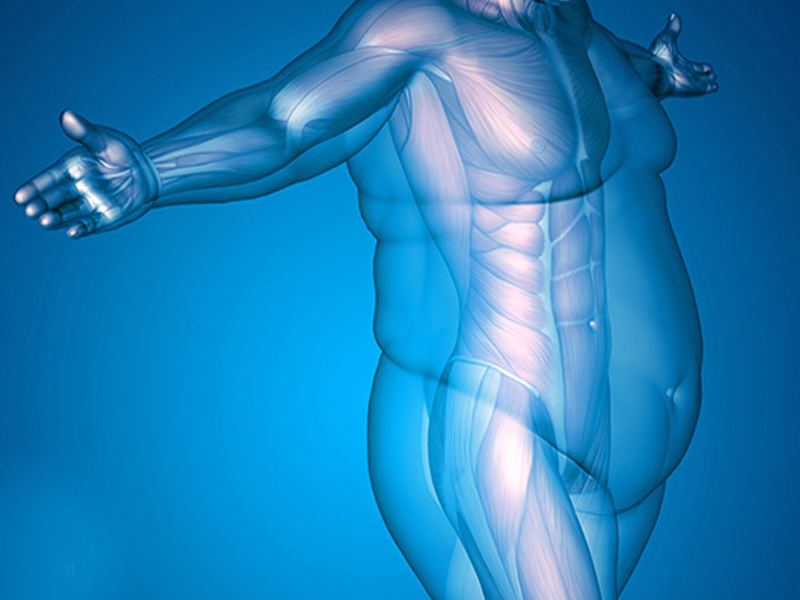Body-mass index (kg/m2), which is obtained by dividing body weight by the square of height, is used to define obesity. Obesity surgery is performed in patients with a body-mass index of 40 kg/m2 and above and in patients with a body-mass index more than 35 kg/m2 who have additional problems such as diabetes, hypertension (high blood pressure), high cholesterol, and sleep apnea. Treatment methods such as diet, exercise, and medication should be tried before surgery. In addition, a careful and detailed clinical evaluation should be performed to determine whether there are any other diseases that may cause obesity. Therefore, a multidisciplinary team should evaluate the patient. Before decision of operation, the patient should be examined by experts in psychiatry, pulmonology, and endocrinology.
Currently, obesity surgery is performed on patients who cannot be treated with methods such as diet and drug therapy. It should not be thought that obesity surgery is performed only for weight loss and cosmetic purposes. It should be known that obesity surgery can correct or prevent serious health problems such as diabetes, hypertension (high blood pressure), high cholesterol, sleep apnea, cardiovascular diseases, and sudden death risk in addition to weight loss.
Scientific research has demonstrated that individuals who undergo surgery experience a considerable reduction in body weight as well as improvements in their blood sugar levels, diabetes, cardiovascular risk factors, heart attack, stroke, and sudden death rates. There is also a significant reduction in deaths associated with diabetes-related complications. The risk of colon, kidney, esophagus, and some liver and endometrial cancers increases in the presence of obesity and decreases after bariatric surgery.
Main Surgical Techniques
Adjustable Gastric Banding
Also known as a gastric band, it is an attempt to restrict food intake by placing a band around the upper part of the stomach. It is applied laparoscopically. According to the current techniques applied today, weight loss is not sufficient. Mechanical complications and reoperation rates are high. It is a method that is being abandoned.
Vertical Gastrectomy (Gastric sleeve, Sleeve Gastrectomy)
It is the process of taking down the entire greater curvature of the stomach and creating a gastric tube. It is the most widely performed procedure in the world today. It is effective by restricting food intake and diminishing appetite. It is technically simpler than other surgeries. It also has fewer complications. Since the intestine is not involved, metabolic complications are very rare. Sleeve gastrectomy provides more weight loss and more improvement in other obesity-related problems compared to the adjustable gastric band. It provides similar results to more complicated surgeries such as gastric bypass.
Roux-en-Y Gastric Bypass
It is a surgery that is both restrictive and malabsorptive. It reduces the absorption surface of the intestine. Food intake is decreased by making a small gastric pouch, but because a portion of the small intestine is bypassed, fat and sugar absorption is also decreased. It is preferred in the presence of reflux and severe obesity. It is the most commonly performed surgery after sleeve gastrectomy. It is also highly effective in weight loss and improvement of obesity-related conditions such as diabetes, high blood pressure, high cholesterol, and sleep apnea.
Mini Gastric Bypass (Single Anastomosis Gastric Bypass)
It is the third most common operation in bariatric surgery. The gastric pouch is larger compared to the Roux-en-Y bypass. Its benefits include efficient weight loss and the requirement for only one anastomosis. It is an effective surgery in terms of improvement in obesity-related diabetes. Early complications are also less common. However, there is insufficient data on long-term outcomes. Bile reflux and serious malabsorption can be seen in the long term.
Biliopancreatic Diversion / Duodenal Switch
They are both complex surgeries. Although they are effective operations for weight loss, long-term problems from malabsorption are more frequent. Compared to the operations, they are far less frequent.
All these surgeries have advantages and disadvantages. In the light of current information, the most common surgery in the world is sleeve gastrectomy, followed by Roux-en-Y bypass surgery. The results of these two surgeries are similar. Both surgeries can provide full or partial recovery and improve quality of life in conditions such as diabetes, high blood pressure, sleep apnea, and high cholesterol due to weight loss and obesity.
Appropriate patient selection, appropriate operation selection, meticulous and detailed preoperative examination, and early and late postoperative follow-up are critical for successful treatment.
Endoscopic Methods (Gastric Balloon, Botox)
Endoscopic treatment of obesity involves less invasive methods than surgery in patients who do not want surgery. Endoscopic treatments are suitable for patients who hover between the indications for medical treatment (medication, diet therapy) and surgical treatment. It can be used in patients who do not meet the criteria for bariatric surgery. Studies on new and different techniques are ongoing in this field. Currently, intragastric balloon (gastric balloon) and gastric Botox are used. The intragastric balloon is used more frequently because it is more effective. The intragastric balloon is used in patients who do not want to undergo surgery, who do not meet the criteria for surgery, or who are severely obese, to provide some weight loss before surgery and to reduce the risks of surgery.



